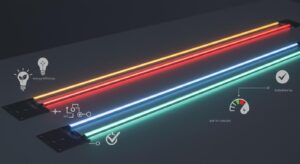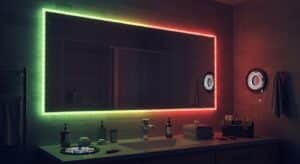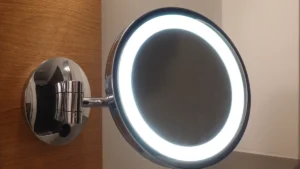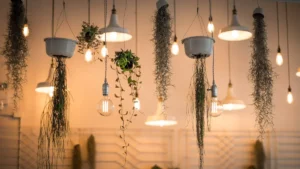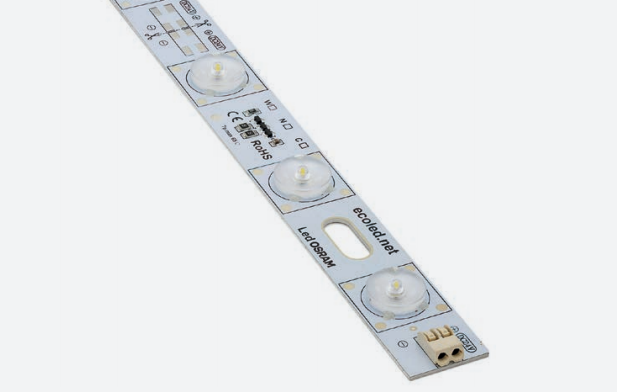
Choosing between flexible and rigid LED strips can significantly impact your lighting project. Flexible LED strips offer unmatched versatility. You can bend, cut, or shape them to fit intricate designs or irregular surfaces. On the other hand, a rigid LED strip provides stability and high brightness, making it ideal for structured installations like under-cabinet or display lighting. Understanding these differences ensures you select the right option to enhance both functionality and aesthetics in your space. Your decision will shape the success of your project.
Key Takeaways
Flexible LED strips are perfect for creative projects, allowing you to bend and cut them to fit irregular surfaces and intricate designs.
Rigid LED strips provide stability and uniform brightness, making them ideal for structured installations like under-cabinet lighting.
Consider your installation environment: flexible strips are great for indoor accent lighting, while rigid strips are better suited for outdoor applications due to their durability.
Evaluate your project requirements: choose flexible strips for dynamic designs and rigid strips for fixed, consistent lighting needs.
Budget wisely: flexible LED strips are often more affordable upfront, but rigid strips may offer better long-term value due to their durability.
Assess the practicality of installation: flexible strips are lightweight and easy to mount, while rigid strips provide a more secure fit for long-term use.
Understanding the unique features and benefits of each type of LED strip will help you make an informed decision that enhances your lighting project.
Overview of LED Strips
LED strips have revolutionized modern lighting by offering a versatile and efficient solution for various applications. Whether you need ambient lighting for your home or a functional setup for commercial spaces, these strips provide a customizable option to meet your needs.
What Are LED Strips?
LED strips are linear lighting solutions that consist of multiple light-emitting diodes (LEDs) mounted on a circuit board. These strips are designed to deliver bright, energy-efficient illumination in a compact form. They come in different lengths, colors, and brightness levels, making them suitable for a wide range of projects. You can use them for decorative purposes, task lighting, or even architectural highlights. Their adaptability has made them a popular choice for both residential and commercial use.
Types of LED Strips
Flexible LED Strips
Flexible LED strips are built on a bendable circuit board, allowing you to shape them to fit curved or irregular surfaces. This flexibility makes them ideal for creative designs, such as tracing patterns or highlighting contours. You can cut these strips into custom lengths, which adds to their versatility. They are often used for accent lighting, under-cabinet installations, or dynamic lighting effects in spaces where adaptability is key.
Some key features of flexible LED strips include:
Bendable Design: Perfect for wrapping around corners or fitting into tight spaces.
Customizable Lengths: Easily cut to match your specific requirements.
Dynamic Applications: Suitable for artistic and decorative lighting needs.
Rigid LED Strips
Rigid LED strips, in contrast, are mounted on a sturdy substrate, such as an aluminum PCB or FR4 board. These strips maintain a straight form and cannot be bent, making them ideal for structured installations. They are often encased in protective housing, which enhances their durability and ensures efficient heat management. You’ll find rigid LED strips commonly used in applications requiring consistent, uniform lighting, such as under-cabinet lighting, display cases, or workbenches.
Key features of rigid LED strips include:
Durable Construction: Built with a solid frame for added stability.
Uniform Illumination: Provides consistent brightness across the strip.
Easy Installation: Designed for straightforward mounting in fixed positions.
“Rigid LED strips are capable of fixing very easily as compared to flexible LED strips. Moreover, these can be installed and processed easily.”
Both types of LED strips serve unique purposes. Flexible LED strips excel in adaptability, while rigid LED strips offer stability and durability. Understanding their differences will help you choose the right option for your project.
Flexible vs. Rigid LED Strips: Features, Advantages, and Disadvantages
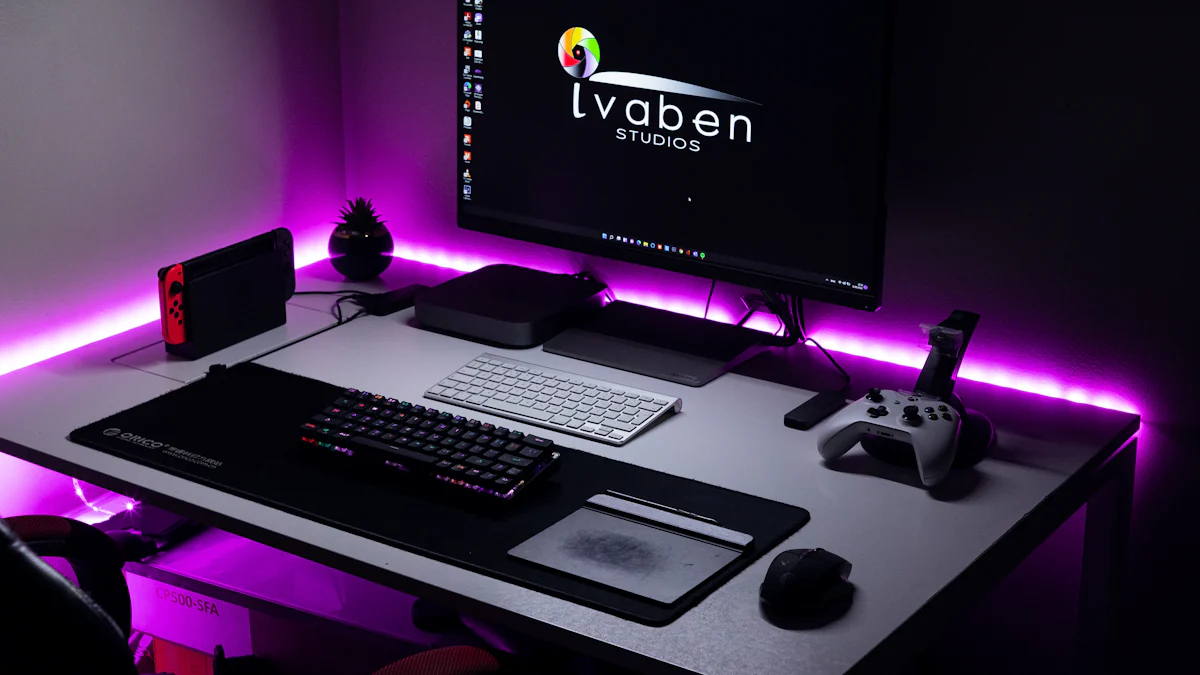
Features
Material and Design
The material and design of LED strips play a crucial role in their functionality. Flexible LED strips use a bendable circuit board, often made from materials like polyimide or flexible plastic. This design allows you to curve and shape them to fit irregular surfaces or intricate patterns. They are lightweight and easy to handle, making them ideal for creative projects.
In contrast, rigid LED strips are built on a solid substrate, such as aluminum or FR4 boards. These materials provide a sturdy structure, ensuring durability and better heat dissipation. The rigid design makes them less prone to physical damage, which is essential for installations requiring long-term reliability. Their robust construction also supports consistent voltage maintenance, reducing the risk of brightness inconsistencies.
Installation and Flexibility
Flexible LED strips excel in adaptability. You can cut them into custom lengths and install them in tight spaces or around corners. Their adhesive backing simplifies the installation process, allowing you to mount them on various surfaces without additional tools. This flexibility makes them perfect for dynamic lighting setups.
Rigid LED strips, however, offer straightforward installation for fixed positions. Their solid frame ensures stability, making them easier to mount on flat surfaces like cabinets or display cases. While they lack the ability to bend, their structured design provides uniform illumination, which is ideal for applications requiring consistent lighting.
Advantages
Benefits of Flexible LED Strips
Flexible LED strips provide unmatched versatility. Their bendable design allows you to create unique lighting effects, such as tracing curves or highlighting architectural features. You can easily customize their length to fit your specific needs, making them suitable for both small and large projects. Their lightweight nature also simplifies transportation and handling.
Other advantages include:
Easy integration into creative designs.
Compatibility with irregular or curved surfaces.
Simple installation with adhesive backing.
Benefits of Rigid LED Strips
Rigid LED strips stand out for their durability and performance. Their solid construction ensures they can withstand physical stress and environmental factors better than flexible strips. They also offer superior heat dissipation, which enhances their lifespan and efficiency. You’ll find them particularly useful for applications requiring stable and uniform lighting.
Key benefits include:
Long-lasting performance due to sturdy materials.
Consistent brightness across the strip.
Reliable voltage maintenance, reducing color shifts.
“Rigid LED strips are less susceptible to voltage drops and provide better heat management, making them ideal for structured installations.”
Disadvantages
Limitations of Flexible LED Strips
While flexible LED strips offer many advantages, they come with certain limitations. Their bendable design makes them more prone to wear and tear over time. They may also struggle with heat dissipation, which can affect their longevity in high-temperature environments. Additionally, their adhesive backing might not adhere well to all surfaces, requiring extra support in some cases.
Limitations of Rigid LED Strips
Rigid LED strips lack the adaptability of their flexible counterparts. Their inability to bend restricts their use to flat or structured surfaces. This limitation makes them unsuitable for projects requiring dynamic or curved installations. They are also heavier and bulkier, which can complicate transportation and handling during installation.
Despite these drawbacks, rigid LED strips remain a reliable choice for applications prioritizing durability and consistent performance.
Applications of Flexible and Rigid LED Strips
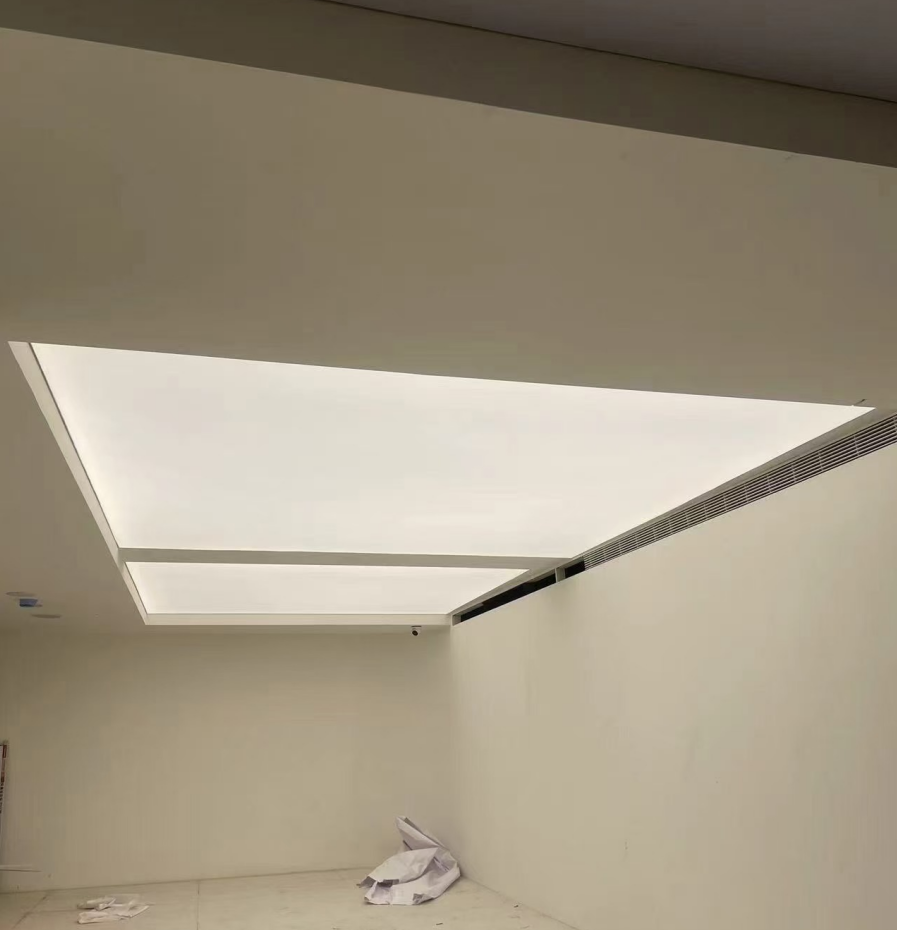
Best Use Cases for Flexible LED Strips
Flexible LED strips shine in projects that demand creativity and adaptability. Their bendable design allows you to install them on curved surfaces, irregular shapes, or tight corners. You can use them to highlight architectural features, trace patterns, or create dynamic lighting effects. These strips are ideal for spaces where flexibility is essential.
For home use, flexible LED strips work well for accent lighting. You can place them under cabinets, along staircases, or behind furniture to create a warm and inviting atmosphere. They also excel in decorative applications, such as outlining mirrors, shelves, or artwork. Their ability to be cut into custom lengths ensures they fit perfectly into any design.
In commercial settings, flexible LED strips enhance visual appeal. Retail stores often use them to highlight product displays or create eye-catching signage. Event planners rely on their versatility to design immersive lighting for weddings, parties, or exhibitions. Their lightweight nature makes them easy to transport and install, even in temporary setups.
“Flexible LED strips offer great versatility. You can bend and shape them to fit any corner or curve in your room. These strips are perfect for creative projects where flexibility is key.” – Lumary Smart
Best Use Cases for Rigid LED Strips
Rigid LED strips excel in applications requiring durability and consistent illumination. Their sturdy construction makes them suitable for high-traffic areas or environments exposed to wear and tear. You can rely on them for long-term installations where stability and uniform brightness are priorities.
In residential spaces, rigid LED strips are perfect for under-cabinet lighting in kitchens or workspaces. Their solid frame ensures they stay securely in place, providing reliable illumination for tasks like cooking or reading. They also work well in garages or basements, where robust lighting solutions are necessary.
For commercial and industrial use, rigid LED strips deliver dependable performance. You’ll find them in display cases, where consistent brightness enhances product visibility. They are also common in workbenches or assembly lines, offering focused lighting for precision tasks. Outdoor applications, such as signage or architectural lighting, benefit from their durability and efficient heat dissipation.
“Consider the installation environment, shape, and your lighting needs. Use flexible LED strips for curved surfaces or creative designs, and choose rigid LED strips for straight, consistent illumination in high-traffic or outdoor areas.” – Unitop LED Strip
Both flexible and rigid LED strips serve unique purposes. Flexible strips bring creativity to life, while rigid strips provide reliability and strength. Understanding these use cases helps you select the right type for your project.
Key Factors to Consider When Choosing LED Strips
When selecting between flexible and rigid LED strips, understanding key factors can help you make the best decision for your project. Each factor plays a role in determining which type of LED strip aligns with your needs.
Project Requirements
Indoor vs. Outdoor Use
The environment where you plan to install the LED strips matters. For indoor use, both flexible and rigid LED strips work well. Flexible strips are ideal for accent lighting in living rooms, bedrooms, or kitchens. Rigid LED strips, with their durable construction, excel in task lighting for workspaces or under-cabinet installations.
Outdoor projects require more consideration. Rigid LED strips often come with protective housings that resist weather conditions, making them a reliable choice for outdoor signage or architectural lighting. Flexible LED strips can also work outdoors, but you must ensure they have proper waterproofing to withstand moisture and temperature changes.
“Rigid LED strips are better suited for outdoor environments due to their sturdy design and protective casing.”
Fixed vs. Dynamic Installations
Your installation type will influence your choice. For fixed installations, such as under-cabinet lighting or display cases, rigid LED strips provide stability and uniform brightness. Their solid structure ensures they stay securely in place.
Dynamic installations, like curved designs or irregular surfaces, benefit from flexible LED strips. Their bendable nature allows you to create unique patterns or wrap them around corners. If your project involves frequent adjustments or creative layouts, flexible strips offer the adaptability you need.
Budget Considerations
Cost Differences
Budget constraints often play a significant role in decision-making. Flexible LED strips typically have a lower upfront cost, making them a budget-friendly option for smaller projects or temporary setups. However, rigid LED strips may require a higher initial investment due to their durable materials and protective features.
Long-Term Value and Durability
While flexible LED strips are cost-effective initially, rigid LED strips often provide better long-term value. Their sturdy construction reduces maintenance needs and extends their lifespan. For projects requiring durability, such as commercial or outdoor applications, rigid LED strips can save you money over time by minimizing replacements and repairs.
“Rigid LED strips might present a higher upfront cost, but their durability and lower maintenance needs can provide better value over the lifespan of your project.”
Aesthetic and Functional Needs
Design Preferences
Your design goals will guide your choice. Flexible LED strips allow for creative freedom. You can use them to highlight architectural features, trace patterns, or add dynamic lighting effects. Their ability to bend and curve makes them perfect for artistic projects.
Rigid LED strips, on the other hand, offer a clean and structured look. They provide consistent illumination, making them ideal for minimalist designs or areas where uniform lighting is essential. If you prefer a sleek and polished appearance, rigid strips are a great option.
Practicality and Maintenance
Consider the practicality of installation and upkeep. Flexible LED strips are lightweight and easy to install, often featuring adhesive backing for quick mounting. However, their adhesive may weaken over time, requiring occasional reattachment.
Rigid LED strips are heavier but easier to secure in fixed positions. Their robust design ensures they remain in place, reducing the need for maintenance. If you prioritize hassle-free upkeep, rigid strips offer a practical solution.
By evaluating these factors, you can confidently choose the LED strip that meets your project’s requirements. Whether you need flexibility, durability, or a balance of both, understanding your priorities will lead to a successful lighting solution.
Expert Tips for Choosing Between Flexible and Rigid LED Strips
Assessing Your Space
Surface and Environment Evaluation
Before selecting an LED strip, evaluate the surface and environment where you plan to install it. Consider whether the surface is flat, curved, or irregular. Flexible LED strips work best on uneven or curved surfaces, while rigid strips suit flat and structured areas. For example, if you want to illuminate a curved staircase or highlight intricate patterns, flexible strips will adapt to the shape effortlessly. On the other hand, rigid strips provide stability and uniform lighting for flat surfaces like under-cabinet spaces or display shelves.
Environmental factors also play a crucial role. For outdoor installations, check for exposure to moisture, dust, or extreme temperatures. Rigid LED strips often come with protective casings, making them more durable in harsh conditions. Flexible strips can also work outdoors, but you must ensure they are waterproof and designed for external use.
“The key for you when buying LED strips is to make sure you know your application and area restrictions.”
Determining Flexibility Needs
Understanding your flexibility requirements will help you choose the right type of LED strip. If your project involves creative designs, such as tracing curves or wrapping around corners, flexible LED strips are the ideal choice. Their bendable nature allows you to experiment with unique layouts and dynamic lighting effects.
For projects that demand a fixed and structured setup, rigid LED strips offer better performance. They provide consistent brightness and are easier to secure in place. Think about the level of adaptability your project needs and match it with the strip’s capabilities. This step ensures your lighting solution aligns perfectly with your vision.
Balancing Cost and Quality
Avoiding Overspending
Budget management is essential when choosing LED strips. Start by identifying your project’s requirements and avoid purchasing features you don’t need. Flexible LED strips often have a lower upfront cost, making them suitable for smaller or temporary projects. However, don’t let the initial price alone guide your decision. Consider the long-term value and whether the strip meets your specific needs.
Rigid LED strips may require a higher initial investment due to their durable materials and protective features. If your project demands longevity and reliability, spending a bit more upfront can save you money on replacements and maintenance later.
“Buying LED strip lights does not have to be a difficult process as long as you know what to look for.”
Ensuring Durability and Performance
Durability and performance should never be compromised. Flexible LED strips are lightweight and easy to install, but their adhesive backing may weaken over time. For high-traffic areas or environments exposed to wear and tear, rigid LED strips provide a more robust solution. Their sturdy construction ensures they remain intact and functional for extended periods.
Evaluate the strip’s heat dissipation capabilities as well. Rigid LED strips excel in managing heat, which enhances their lifespan and efficiency. Flexible strips may struggle in high-temperature settings, so choose accordingly. Prioritizing quality ensures your lighting project delivers consistent results without frequent repairs or replacements.
Choosing between flexible and rigid LED strips requires careful consideration of your project’s needs. Flexible strips offer adaptability for creative designs, while rigid strips provide durability and consistent illumination. To make the right choice:
Assess your space: Determine the surface type and environment.
Set a budget: Balance cost with long-term value.
Define your goals: Align your design and functional needs.
“The right LED strip can transform your space, blending functionality with aesthetics.”
Explore both options thoughtfully and seek expert advice if needed to ensure your lighting solution enhances your project effectively.
See Also
Selecting The Perfect LED Strip Lights For Your Space
Best LED Strip Lights of 2024: A Comprehensive Review
Understanding COB vs. SMD LED Strip Lights And Their Uses
